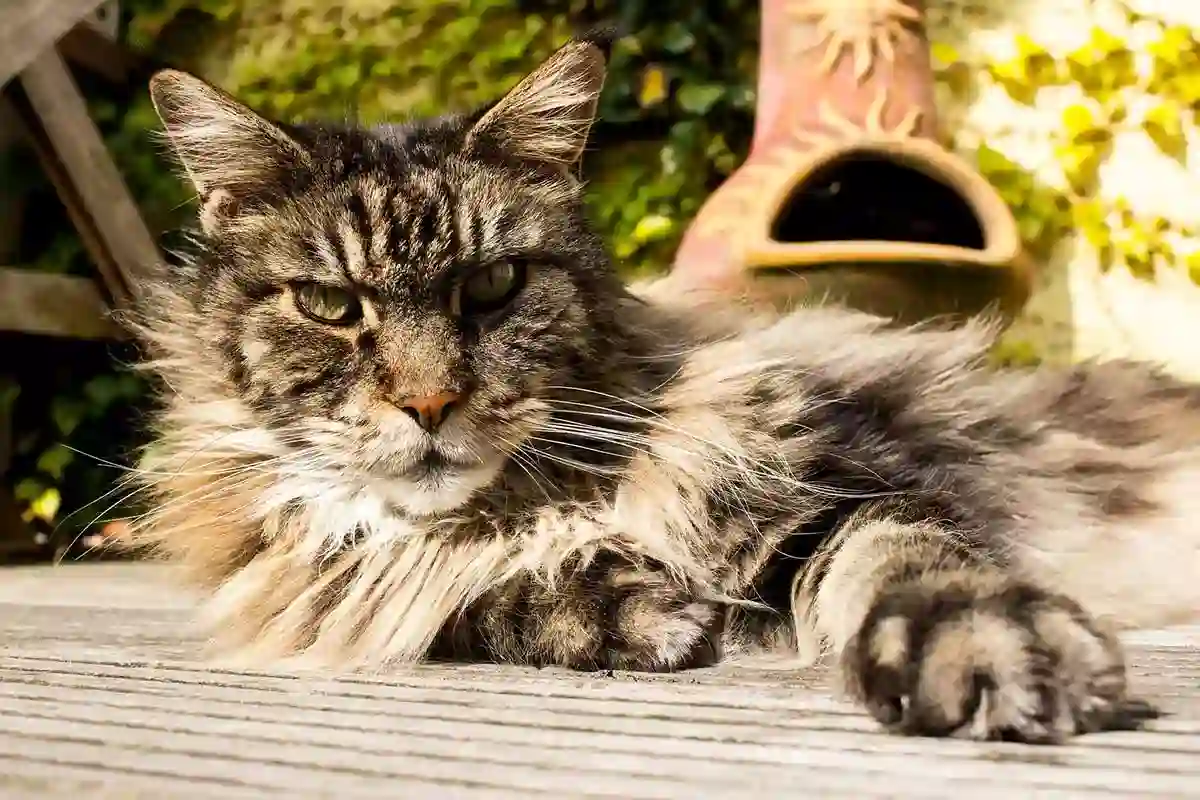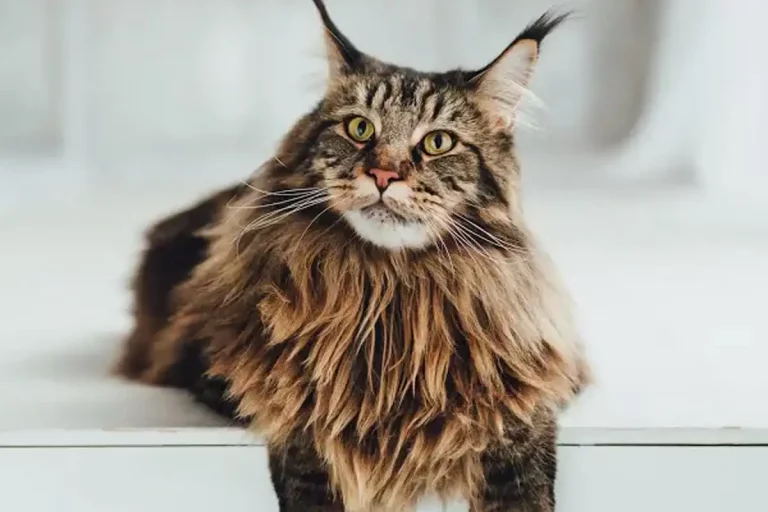
After reading this article, you will know how to remove mats safely and with the least amount of stress to you and your Maine coon.
The Maine Coon is a semi-longhaired cat breed. This means that they have a lot of fur to tangle. Tangled fur is a serious problem in cats and should be treated as soon as possible. So, how do you remove tangles from your Maine Coon?
The method you use to remove knots from your Maine coon will depend on the degree of tangling. You should be able to remove most knots yourself at home, provided you have the proper equipment on hand. Larger knots will need to be removed by a veterinarian or professional groomer.
What is knot formation and why is it a problem?
Knot formation is more common in long-haired cats. Maine Coons have two layers of hair. If they are not groomed regularly, the undercoat that falls out can become entangled with the topcoat. These tangles can quickly turn into tight knots that pull on their delicate skin. This can be very painful for your cat. In the Maine Coon, knots usually form around the armpits and hindquarters, often from litter box clinging (or butt nuggets as my husband likes to call them).
When the skin is constantly pulled over a period of time, it becomes inflamed. The inflammation can easily lead to an infection requiring antibiotic treatment. It is therefore important to remove matted hair as soon as possible.
How do I remove matted fur from my Maine Coon?
Tangled hair can be removed at home, but the most tangled hair may require treatment by a professional groomer or veterinarian.
It is not recommended to use scissors to remove your cat’s matted fur. Cats have very loose and stretchy skin, but also very thin. If they move while you are trying to cut an area of matted fur, it can result in a nick in the skin. Small nicks can result in large gaping wounds that take a long time to heal and the fur may not grow back as it was. This is not something you want for your cat, especially if she has such a majestic coat!
Step 1: Relax your Maine Coon
When you de-mat a cat, the first thing to do is to make it calm and quiet. Do it at a time when she’s relaxed, for example, don’t try to untangle her just before feeding time. Give her a nice pat and maybe even some treats before you start. Depending on your cat’s temperament, you may want to try a detangling spray, but in my experience, cats hate to be sprayed with anything, so it may make the situation worse.
Step 2: use a greyhound comb
Take a wide-toothed comb, sometimes called a greyhound comb, and slide the teeth under the mat. Once you have determined where the matted fur begins and the skin ends, you can gently pull the mat out from under the skin. Replace the comb with your fingers and hold the mat in place. Now you can try combing the mat. Start at the end and gently separate the fur, being careful not to pull on the skin.
Lire l’article Les 5 meilleures brosses pour Maine Coon
Step 3: Try an undercoat comb
If the knot is too tight for a wide-tooth comb to work, it’s time to try using an undercoat comb. This is a special type of comb with two layers of teeth: a first set for removing the undercoat and a second set with more teeth to loosen knots in the coat. If you’re not sure what an undercoat comb looks like, click on this link to see an example on Amazon.
Step 4: Try the carpet comb next
If you have no luck with the undercoat comb, your next port of call is the carpet comb. This is a brush that also has a layer of razors that can cut through some of the matted fur. Try inserting the razor under the carpet if you can clearly see where the skin ends and the carpet begins.
Step 5: Use a clipper
Finally, if all else fails, you can try using electric clippers. They are much safer than scissors. So the question is whether you feel confident using clippers on a cat.
These are the pet clippers we bought on Amazon for our Maine Coon. They are equipped with a noise reduction system so as not to scare the cat.
Step 6: Examine the skin
Once you have removed the matted fur, it is important to examine the skin for areas of inflammation.
If the hair is very matted, a veterinarian or professional groomer should be consulted. It may even be necessary to administer a sedative, as detangling with a clipper can be a fairly painful process. The noise and vibration of the clippers, combined with the discomfort of pulling out the carpet, can be very upsetting to your cat.
How can I keep my Maine Coon’s fur from matting?
Once your Maine Coon has been untangled, you need to take precautions to ensure that it doesn’t happen again in the future. By taking a few minutes to brush your cat every day, you’ll greatly reduce the chance of knots and tangles forming. You’ll also find that your cat sheds less with daily care, which is a blessing when it comes to vacuuming carpets.
For daily maintenance, simply use a silicone massage brush, like this one on Amazon, which is a good, inexpensive example. (Paid link) Your cat will love the massaging sensation and won’t even notice that you’re getting rid of all the unwanted hair that’s accumulated during the day.
It is also important to do a thorough grooming session on a regular basis, perhaps once or twice a week. This is a more intensive session and may even involve giving your Maine coon a bath if they don’t like the water. The need for a bath will largely depend on how dirty they are. Many Maine Coons are kept as indoor cats and therefore do not need to be bathed regularly. An outdoor cat will of course be more likely to get a little dirty.
It’s crucial that you don’t bathe a cat with tangled fur, as this will only make the situation worse. If you are going to bathe your cat, first brush your cat to make sure there are no knots in the fur and to remove any small tangles and knots you find. When bathing your cat, use a good quality cat shampoo. Click here to see recommendations for the best shampoos for Maine coons.
You may find that as your cat gets older, it grooms less. This may be due to arthritis in the joints that makes it difficult to groom certain areas. This puts them at high risk for developing mats. If this is the case with your cat, you should consider increasing the frequency of his regular grooming sessions.
